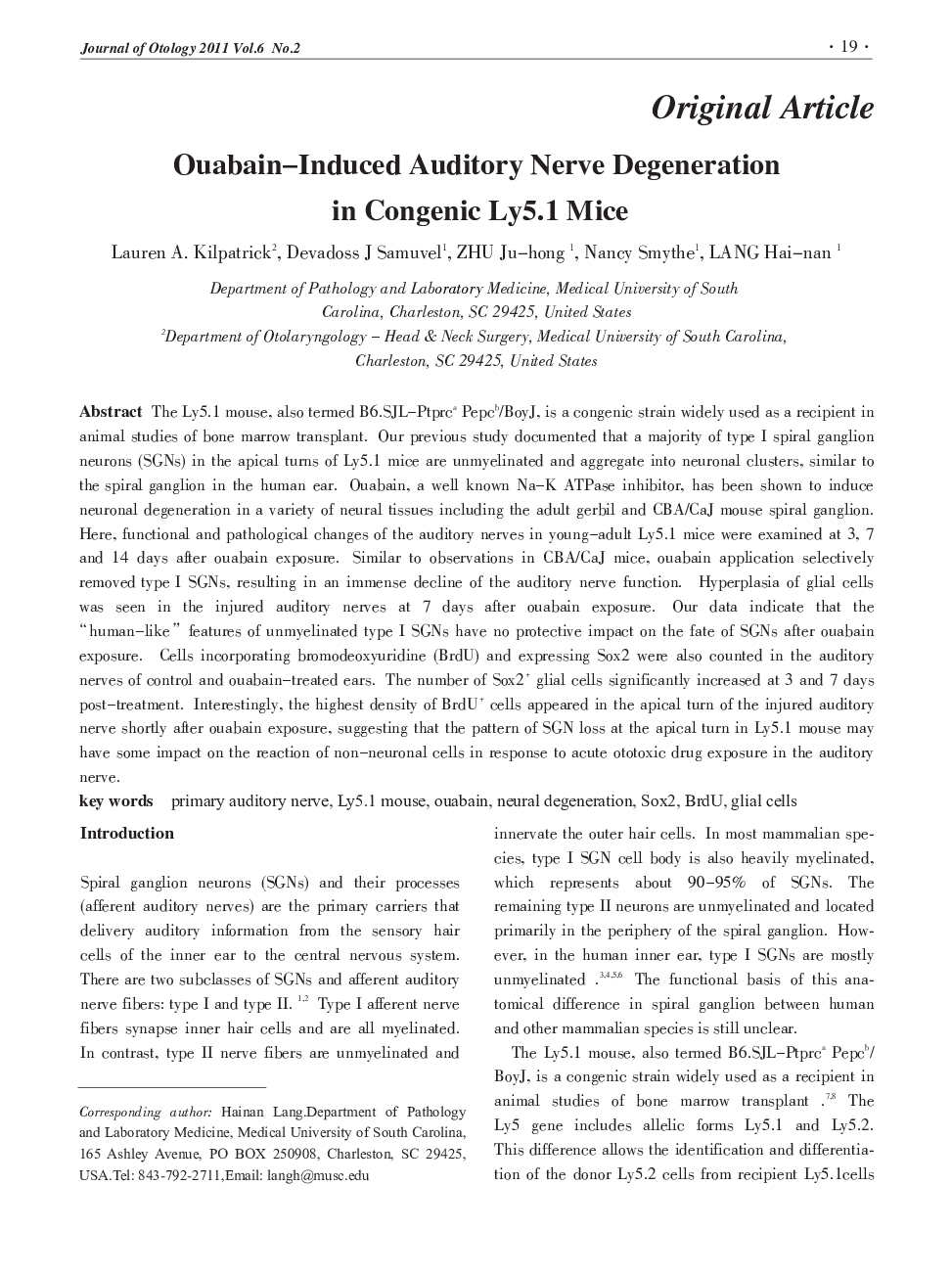| Article ID | Journal | Published Year | Pages | File Type |
|---|---|---|---|---|
| 4116883 | Journal of Otology | 2011 | 10 Pages |
The Ly5.1 mouse, also termed B6.SJL–Ptprca Pepcb/BoyJ, is a congenic strain widely used as a recipient in animal studies of bone marrow transplant. Our previous study documented that a majority of type I spiral ganglion neurons (SGNs) in the apical turns of Ly5.1 mice are unmyelinated and aggregate into neuronal clusters, similar to the spiral ganglion in the human ear. Ouabain, a well known Na–K ATPase inhibitor, has been shown to induce neuronal degeneration in a variety of neural tissues including the adult gerbil and CBA/CaJ mouse spiral ganglion. Here, functional and pathological changes of the auditory nerves in young–adult Ly5.1 mice were examined at 3, 7 and 14 days after ouabain exposure. Similar to observations in CBA/CaJ mice, ouabain application selectively removed type I SGNs, resulting in an immense decline of the auditory nerve function. Hyperplasia of glial cells was seen in the injured auditory nerves at 7 days after ouabain exposure. Our data indicate that the “human–like” features of unmyelinated type I SGNs have no protective impact on the fate of SGNs after ouabain exposure. Cells incorporating bromodeoxyuridine (BrdU) and expressing Sox2 were also counted in the auditory nerves of control and ouabain–treated ears. The number of Sox2+ glial cells significantly increased at 3 and 7 days post–treatment. Interestingly, the highest density of BrdU + cells appeared in the apical turn of the injured auditory nerve shortly after ouabain exposure, suggesting that the pattern of SGN loss at the apical turn in Ly5.1 mouse may have some impact on the reaction of non–neuronal cells in response to acute ototoxic drug exposure in the auditory nerve.
